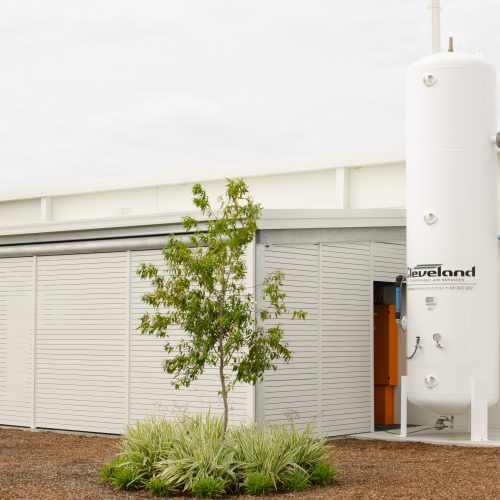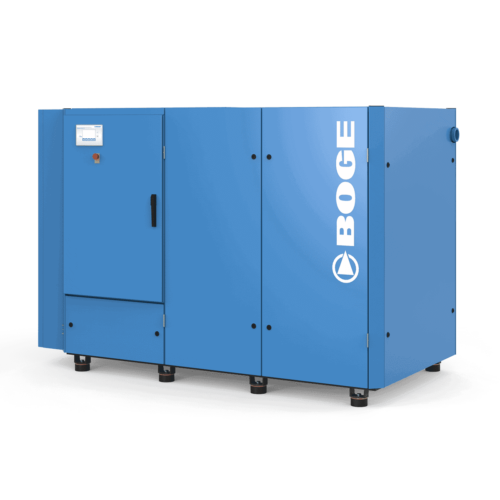What pressure should my air receiver be and is it important?
The pressure of your air receiver, also known as the air tank, is a crucial factor that you need to consider due to its direct impact on the performance of your entire compressed air system. The air receiver serves as a buffer and storage medium between your air compressor and your consumption system. The pressure it holds can determine how smoothly your usage applications run and the overall longevity of your system.
The correct pressure for your air receiver can be reliant on a multitude of factors such as the specific application of the air compressor, the compressor’s size, and the volume of air storage needed. In general, the air receiver should be pressurised to the highest maximum pressure that your application will require, plus a safety margin. However, the tank should not be pressurised beyond its maximum allowable working pressure (MAWP), typically designated by the manufacturer, for safety reasons.
The importance of having the correct pressure in your air receiver cannot be overstated. Firstly, a correctly pressurised tank ensures that your compressed air system runs smoothly. A too high pressure may lead to unnecessary strain on your system, causing premature wear and tear. On the other hand, a too low pressure could result in inadequate air supply, leading to inefficiencies or underperformance of the tools or equipment powered by the compressor.
Maintaining the right pressure is also a crucial aspect in terms of energy efficiency. Over-pressurising the tank not only leads to potential damages but also results in an increased energy consumption. Given that the energy required to operate air compressors can often represent a significant portion of a facility’s total energy costs, operating at the appropriate pressure can yield substantial energy and cost savings.
Lastly, it’s worth noting that the pressure safety valve is a vital part of the air receiver. If the system pressure exceeds the maximum allowable working pressure, this safety valve should open and prevent a dangerous build-up of pressure. Therefore, it is important to ensure that your pressure safety valve is functioning correctly and that its set pressure is not higher than the air receiver’s maximum allowable pressure.
The pressure of your air receiver is a key element that influences not only the efficiency and performance of your compressed air system but also its safety and energy consumption. It’s therefore essential to regularly monitor and adjust it as needed, according to the specifications of your application and the guidelines provided by the manufacturer.
How often should I drain my air tank?
Draining your air tank is an essential part of maintaining an air receiver system. It ensures that accumulated moisture and contaminants are removed, which can significantly extend the lifespan of your system as well as ensure optimal performance. The frequency of draining your air tank largely depends on several factors. These include the relative humidity and temperature of your environment, the size of your air tank, and the type of use the compressor is put to.
If your air compressor operates in a humid environment, it will inevitably accumulate more moisture than a compressor operating in a dryer environment. This is because as the compressor compresses the ambient compressed air, it also compresses the moisture in the air, which then condenses into water within the tank. In a humid environment, this accumulation of water can happen quite rapidly and you may need to drain your tank daily or even multiple times a day depending on the extent of use.
On the other hand, if you operate your air compressor in a dry, cool environment, the accumulation of moisture within the air tank is significantly less. In such a case, draining the air tank may only need to be done weekly. However, it’s important to regularly check the water level in the tank to ensure that it isn’t getting too high, leading to potential damage to the system.
Regardless of the environmental conditions and frequency of use, it is always recommended to establish a regular maintenance schedule for your air receiver system. This includes regularly draining the air tank. Even in dryer conditions, there can still be a build-up of other contaminants in the tank over time, such as oil or dust particles, which can affect the performance of the air compressor and the quality of the air it produces.
The size of your air tank also plays a role in determining the frequency of draining. Larger tanks can hold more air (and therefore more moisture), so they don’t need to be drained as often as smaller tanks. However, this doesn’t mean that you can neglect the draining process entirely. It is still crucial to establish a regular draining schedule and stick to it, no matter the size of your tank. Leaving water in the tanks will cause the tanks to potentially corrode internally and thus need to be taken out of service costing you money in replacement costs.
In conclusion, the frequency of draining your air tank is highly dependent on the specific circumstances of your air compressor’s operation. Regular maintenance, including routine draining, is essential for ensuring the longevity and efficiency of your air receiver system. Following a set schedule for draining and using the right tools can help make this process easier and more effective.
What accessories should be used?
Determining the accessories that should be used with your air receiver is crucial in ensuring its optimal operation and longevity. These components not only enhance the performance of the air receiver but also contribute to its overall safety.
Firstly, the most essential accessory to be considered is the pressure relief valve. This safety device is designed to release air when the pressure within the tank exceeds a certain limit, protecting the tank from potential damage and the risk of explosion. The pressure relief valve should be regularly checked and maintained to ensure it functions correctly when required.
Next on the list is the pressure gauge. An accurate pressure gauge is necessary for monitoring the pressure within your air receiver tank. It is vital to ensure that the tank is operating within its designated pressure range to avoid any safety issues or functional problems. A faulty or inaccurate gauge can lead to over-pressurisation, which can cause significant damage to the tank and associated equipment.
Another essential accessory is the drain valve. Over time, water and other condensate can accumulate within the air receiver. If not regularly drained, this build-up can lead to corrosion, reducing the lifespan of the tank. Using an automatic drain valve can make this process much more manageable, as it will automatically drain the tank at specific intervals, removing the need for manual draining.
Air filters are also a crucial accessory. These ensure that the incoming air is free of contaminants, which can negatively affect the performance of your air receiver and downstream equipment. Different types of filters are available, depending on the level of filtration required. It is essential to regularly replace these filters to maintain their effectiveness.
In conclusion, the accessories you choose for your air receiver tank should be selected with care, taking into account the specific requirements of your system. Regular maintenance of these components is vital to ensure the ongoing performance and safety of your air receiver and your investment.
FAQs
By using an air receiver (air tank), you significantly improve the efficiency of your air compressor in several key ways:
Storage Capacity
The air receiver provides additional storage for compressed air, allowing for a reserve of air to be used during high-demand periods. This prevents the air compressor from having to cycle on and off frequently, reducing wear and tear on the compressor and saving energy.
Stabilisation of Pressure
Fluctuations in pressure can be detrimental to tools and machinery that rely on a steady air supply. An air receiver acts as a buffer, smoothing out these fluctuations and providing a more consistent flow of air. This not only improves the performance of the air-powered tools but also extends their lifespan.
Moisture Removal
As mentioned earlier, the air receiver helps in condensing the moisture present in the compressed air. By allowing the air to cool within the tank, moisture can settle at the bottom and be drained away. This prevents water from entering the air lines and damaging tools and machinery.
Energy Efficiency
By reducing the load on the air compressor and stabilising the pressure in the system, an air receiver can lead to significant energy savings. The compressor doesn't have to work as hard to maintain pressure, which results in lower energy consumption.
Pulsation Damping
The air receiver can also dampen pulsations caused by the reciprocating motion of piston compressors. These pulsations can cause wear and tear on the air lines and tools, so reducing them can improve the overall efficiency of the system.
Air receiver maintenance is important to ensure the safety and efficiency of the compressed air system. Regular maintenance helps to prevent equipment failures, reduce energy consumption, and extend the lifespan of the air receiver.
It is recommended to inspect your air receiver at least once a year. However, more frequent inspections may be necessary depending on the usage, environment, and specific requirements of your compressed air system.
Draining your air receiver is important to remove moisture and contaminants that can accumulate inside the tank. This helps to maintain the quality of the compressed air and prevent damage to downstream equipment.
The inclusion of an air storage tank in your compressed air system offers several advantages:
Improved System Stability
An air storage tank acts as a buffer, stabilising the pressure in the system and smoothing out fluctuations. This stability is crucial for applications that require a consistent air supply.
Reduced Energy Consumption
With an air storage tank, the air compressor doesn't have to cycle on and off as frequently, which saves energy. It allows for energy-efficient operation, especially during varying demand periods.
Ability to Meet Peak Air Demands
During periods of high demand, an air storage tank can supply the necessary air without the need for the compressor to run continuously. This helps in avoiding the need for a larger compressor solely for peak loads.
An air receiver is typically positioned in between the air compressor and the rest of the air distribution system. This allows it to store compressed air and deliver it to the applications as needed.
Problems with air receivers often stem from:
Poor Maintenance
Neglecting regular inspections and servicing can lead to issues.
Inadequate Draining
Failure to regularly drain the air receiver can lead to moisture build-up, causing corrosion and other problems.
Excessive Pressure
Operating the tank beyond its rated capacity can lead to failure.
Using a non-code or uncertified air receiver tank is not recommended. Non-code air receiver tanks may not meet the necessary safety standards and could pose a higher risk of failure and injury.
A safety inspection of an air receiver should include checking for signs of corrosion, leaks, damage, proper pressure relief valve operation, and compliance with applicable safety codes and regulations.
In addition to regular inspections, air receiver maintenance may include draining the tank regularly, checking and replacing filters as needed, monitoring pressure levels, and following manufacturer-recommended procedures for maintenance and servicing.
Yes, when performing air receiver maintenance, it is important to follow proper lockout/tagout procedures, wear appropriate protective equipment, and work with trained personnel. Always refer to the manufacturer's guidelines for specific safety precautions.


